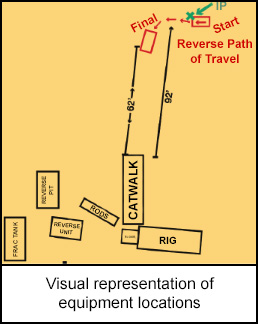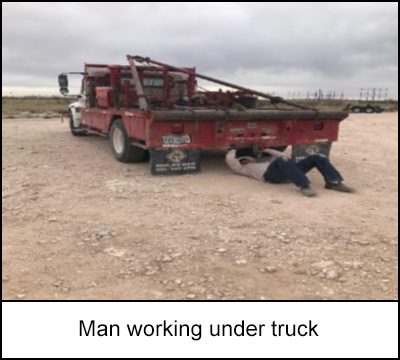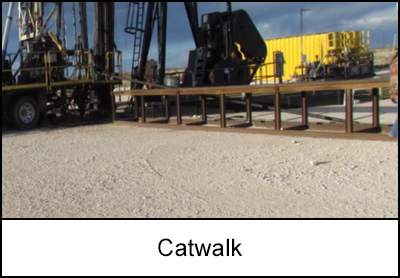-
What happened?
A three-person crew (driver and two assistants) was in the process of backing up a gin pole truck to move a catwalk to the edge of a location.
The crew were all experienced and had done this task several times daily.
A worker was in the process of installing a ‘ball hitch’ onto the truck when it backed over him and he was fatally injured.

-
Why did it happen?
The design of the ball hitch receiver on the truck required the worker to position himself under the vehicle to install a latching pin. The vehicle was running with the driver in the cab while this was being done.
The crew did not discuss whether the ball hitch would be installed prior to backing up or afterwards.
The driver did not verify location of all workers prior to moving the truck.
A spotter was only requested once the truck was ready for final positioning near the equipment, but not for the backing up process.

-
What did they learn?
Ensure clear communication among crew members before and during critical tasks.
Ensure a spotter is assigned throughout the backing-up process.
Avoid task designs that place workers in hazardous positions.
Verify worker locations before moving heavy machinery.
Conduct safety checks before any task.

-
Ask yourself or your crew
How can something like this happen here?
How do we ensure effective communication before and during work activities?
How do we monitor whether we are numb to the risks of high frequency routine tasks? What specific actions are we currently taking to address this risk, and how can we improve?
How do we keep each other safe when working around mobile equipment? What else can we do?

Add to homescreen
Content name
Select existing category:
Content name
New collection
Edit collection
What happened?
A three-person crew (driver and two assistants) was in the process of backing up a gin pole truck to move a catwalk to the edge of a location.
The crew were all experienced and had done this task several times daily.
A worker was in the process of installing a ‘ball hitch’ onto the truck when it backed over him and he was fatally injured.

Why did it happen?
The design of the ball hitch receiver on the truck required the worker to position himself under the vehicle to install a latching pin. The vehicle was running with the driver in the cab while this was being done.
The crew did not discuss whether the ball hitch would be installed prior to backing up or afterwards.
The driver did not verify location of all workers prior to moving the truck.
A spotter was only requested once the truck was ready for final positioning near the equipment, but not for the backing up process.

What did they learn?
Ensure clear communication among crew members before and during critical tasks.
Ensure a spotter is assigned throughout the backing-up process.
Avoid task designs that place workers in hazardous positions.
Verify worker locations before moving heavy machinery.
Conduct safety checks before any task.

Ask yourself or your crew
How can something like this happen here?
How do we ensure effective communication before and during work activities?
How do we monitor whether we are numb to the risks of high frequency routine tasks? What specific actions are we currently taking to address this risk, and how can we improve?
How do we keep each other safe when working around mobile equipment? What else can we do?
A three-person crew (driver and two assistants) was in the process of backing up a truck to move a catwalk to the edge of a location. The crew were all experienced and had done this task several times daily. A worker was in the process of installing a ‘ball hitch’ onto the truck when it backed over him and he was fatally injured.










